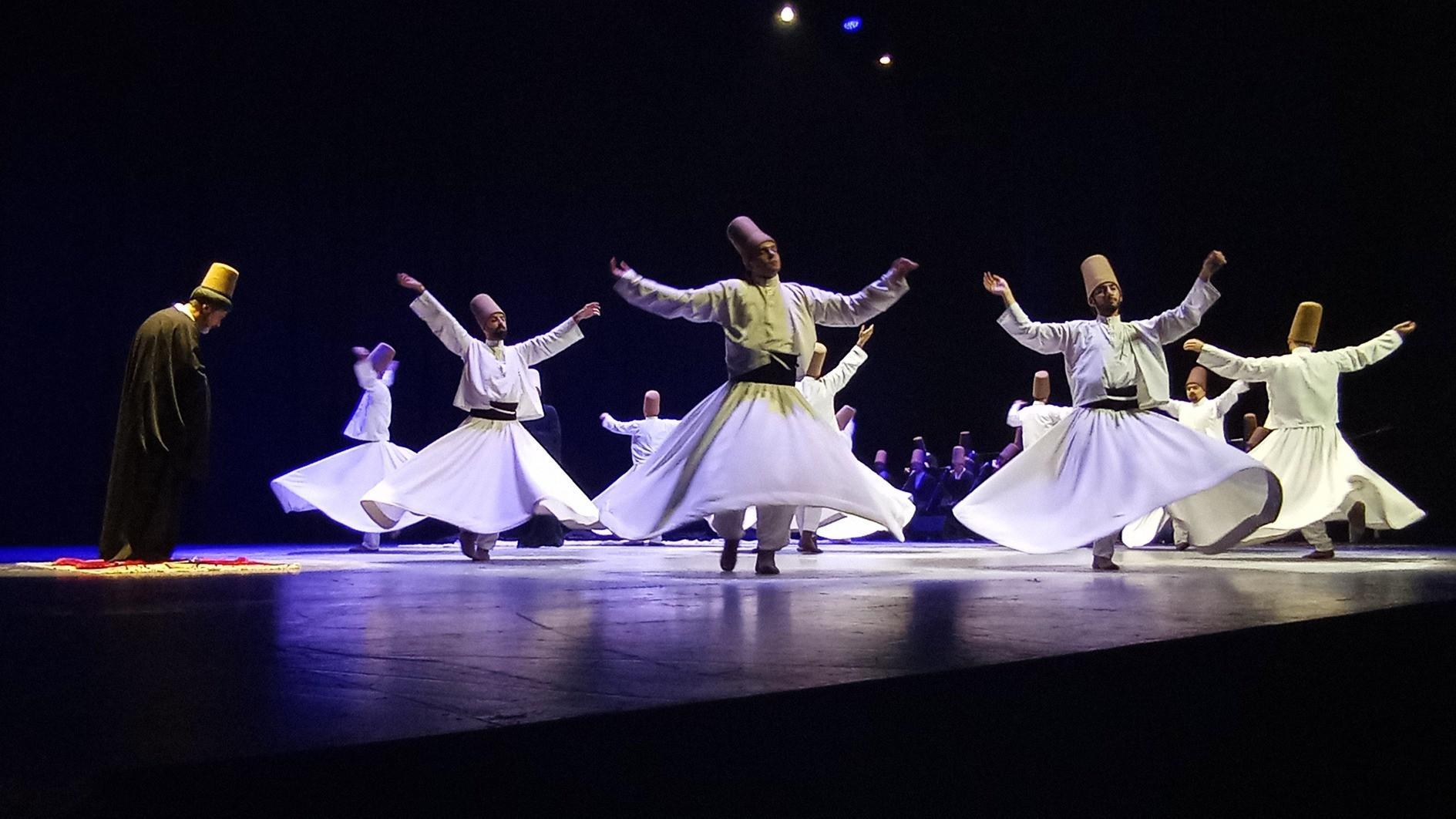
Atatürk Cultural Center (AKM) hosted the Şeb-i Arus, or “Wedding Night” ceremony on Dec. 10, commemorating the 751st anniversary of Mevlana Jalaluddin Rumi’s passing.
Organized by the Turkish Sufi Music Ensemble of the Culture and Tourism Ministry, the performance brought centuries-old Mevlevi traditions to life under the artistic direction of Yüce Gümüş and Mehmet Fatih Çıtlak, the head of a dervish lodge.
The Şeb-i Arus ceremony derives its name from Rumi’s description of death as a reunion with the divine. The highlight of the event was the “Sema” ritual, a spiritually charged dance performed by whirling dervishes dressed in flowing white robes and tall conical hats (sikke). The ritual, deeply embedded in the Mevlevi Sufi tradition, begins with the “Nat-i Sherif,” a musical piece praising Prophet Muhammad. This is followed by the dervishes entering the stage with arms crossed over their chests, symbolizing the unity of Allah.
During the ceremony, the dervishes shed their black cloaks, signifying the abandonment of ego, and begin their counterclockwise whirling. The movement reflects a cosmic embrace, with the right palm open upward to receive divine blessings and the left palm turned downward to distribute them to humanity.
Gümüş emphasized the importance of preserving the ritual’s authenticity, even when performed outside traditional Mevlevihanes, lodges used by Mevlevi dervishes. “We strive to adapt these ceremonies to cultural centers like AKM while maintaining the spirit of the Mevlevi way,” Gümüş explained. Historically performed in the “Meydan-ı Şerif,” the central space of Mevlevihanes, the ritual’s staging at AKM accommodated modern audiences without losing its symbolic depth.
“Even though the setting changes, our goal remains the same: to reflect the love for God and the Prophet,” Gümüş said, noting the cultural significance of traditional Mevlevi music as the pinnacle of Turkish classical music. The ritual’s intricate structure, from its rhythm to its symbolic costumes, embodies both spiritual and artistic mastery.
Çıtlak elaborated on the deeper meaning of Şeb-i Arus, likening it to a “wedding night” between Rumi and Allah. “Rumi viewed death not as an end, but as the ultimate union with the Creator,” he said, referencing Rumi’s poetic directive to mourners: “Do not grieve for me. I am returning to my Beloved.”
While celebrating Şeb-i Arus as a cultural milestone, Çıtlak also cautioned against reducing it to a mere ceremony. “True understanding of Şeb-i Arus requires an intimate knowledge of oneself and one’s relationship with the divine,” he remarked. “It is not just about rituals but embodying the values of unity, love, and enlightenment.
“The Şeb-i Arus ceremony is more than a spectacle; it is a spiritual call to reflect on the purpose of life and the search for spiritual connection,” Çıtlak said, adding that inspired by the cosmic rotation of the planets, the dervishes' sema invites the audience to transcend worldly concerns and embrace the universal truths of love and unity.
"The Şeb-i Arus remains a profound reminder of Rumi’s enduring legacy, offering inspiration to all who seek a deeper connection with themselves and the divine," he concluded.